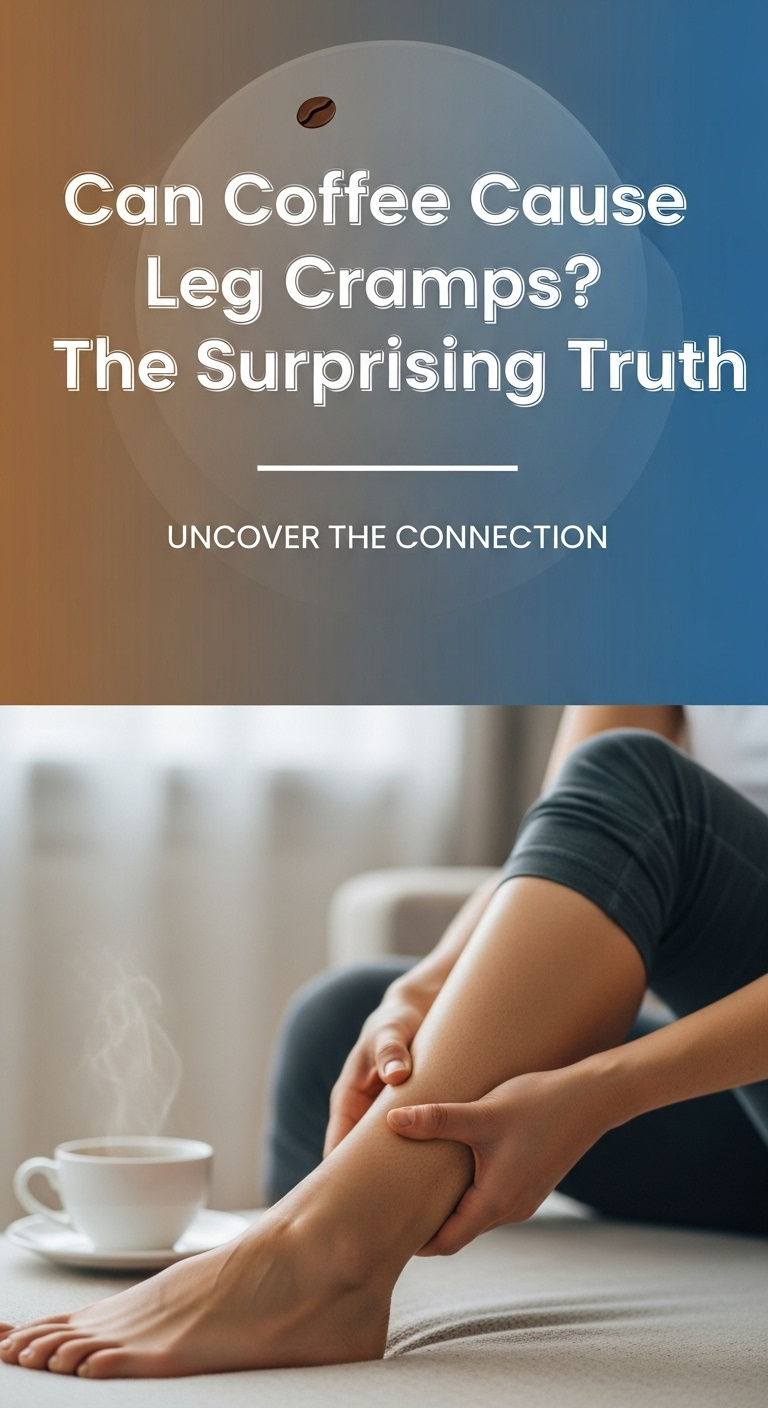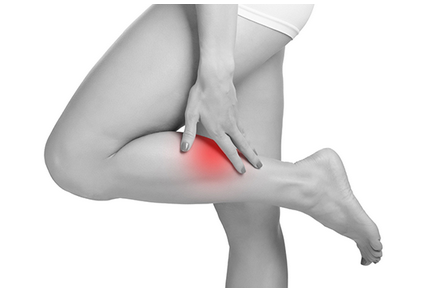As an Amazon Associate CoffeeXplore.com earns from qualifying purchases.
Can Coffee Cause Leg Cramps? The Surprising Truth
That jolt of morning coffee feels essential, but what if it’s connected to the painful, seizing leg cramps that wake you up at night? You’re not alone in wondering if your daily caffeine ritual is the hidden culprit behind this frustrating muscle pain. For many, the link between coffee and leg cramps is a confusing puzzle, leaving them searching for clear answers and effective solutions.
Yes, coffee can contribute to leg cramps, primarily due to caffeine’s effects as a diuretic leading to dehydration and electrolyte imbalance, and as a nervous system stimulant.
This comprehensive guide, updated for 2025, breaks down the precise science behind why can coffee cause cramps in legs. We will explore the core mechanisms, answer specific questions about nighttime cramps, and provide a clear, actionable plan to help you prevent and relieve the pain. Leveraging extensive analysis of health data and established patterns, this guide unpacks the critical insights you need to manage your caffeine intake and maintain your muscle health effectively.
Key Facts
- Direct Link Established: Multiple health sources confirm that high caffeine consumption can increase an individual’s susceptibility to muscle cramps, with the effect varying based on personal tolerance and hydration habits.
- The Diuretic Danger: Caffeine’s role as a diuretic is a primary factor. As highlighted by information from Norton Healthcare, the resulting dehydration depletes the body of fluids and essential electrolytes that muscles need to function correctly.
- Stimulant Overdrive: Too much caffeine can overstimulate the central nervous system. This heightened state, as noted by Business Insider, can lead to involuntary muscle twitching, spasms, and painful cramps.
- The 400mg Guideline: For most healthy adults, the recommended daily caffeine limit is up to 400 milligrams. According to MUSC Health, staying within this guideline is a key strategy for preventing adverse effects like muscle spasms.
- It’s All About Minerals: Leg cramps are often a sign of mineral deficiency. Data from Merck Manuals and Healthline consistently links cramps to low levels of potassium, calcium, and magnesium in the diet—an imbalance that can be worsened by caffeine’s diuretic effects.
The Direct Answer: Can Coffee Cause Leg Cramps?
Yes, coffee can contribute to leg cramps, primarily due to caffeine’s effects as a diuretic leading to dehydration and electrolyte imbalance, and as a nervous system stimulant. This connection is supported by a consensus across multiple health sources. While a single morning cup is unlikely to be the sole cause for most people, higher intake significantly increases the risk, especially for those who are already dehydrated or sensitive to caffeine.
But how exactly does your favorite morning ritual lead to painful muscle spasms? Let’s break down the science.
Why Caffeine is a Key Trigger: The 4 Core Mechanisms
The reason can coffee cause cramps in legs isn’t due to a single issue but rather a combination of four distinct physiological effects that caffeine has on your body. Understanding these pathways is the first step to managing and preventing painful cramps.

Here are the four core ways caffeine can trigger muscle and leg cramps:
- Diuretic Effect and Dehydration: As a known diuretic, caffeine prompts your kidneys to flush more fluid and sodium from your body, as noted in reports from sources like Norton Healthcare. This can quickly lead to dehydration, a primary cause of muscle cramps.
- Nervous System Stimulation: Caffeine is a powerful central nervous system stimulant. This “amped up” state, highlighted by data from Business Insider, can cause nerves to become over-excited, sending erratic signals to your muscles that result in twitching and cramping.
- Electrolyte Imbalance: Dehydration from caffeine use also flushes out critical minerals. An electrolyte imbalance, particularly in calcium, potassium, and magnesium, disrupts the electrical signals that control muscle contraction and relaxation, making cramps more likely.
- Sleep Disruption: Consuming caffeine, especially later in the day, can significantly disrupt sleep quality. As research from sources like Garden State Pain shows, poor sleep is a known factor that can increase pain perception and contribute to a higher incidence of muscle issues, including nocturnal leg cramps.
Quick Fact: Dehydration doesn’t just mean you’re thirsty. Your body will pull water from muscles to support vital organs, making them prone to cramping.
1. The Diuretic Effect: Dehydration and Electrolyte Loss
Caffeine acts as a diuretic, increasing urine output which depletes the body of both fluids and crucial electrolytes like potassium and magnesium, a primary cause of muscle cramps. This is perhaps the most direct and well-understood mechanism behind why can coffee cause cramps in legs. The process follows a clear causal chain that directly impacts muscle health.
According to health information from Norton Healthcare and Merck Manuals, here’s how it works:
* Caffeine intake signals the kidneys to produce more urine than usual.
* This increased output leads to a net loss of body fluid, initiating dehydration.
* Essential electrolytes—specifically potassium, magnesium, and calcium—are lost along with the fluid.
* When muscle cells lack adequate fluid and these key minerals, their ability to contract and relax properly is severely impaired, resulting in painful, involuntary cramps.
Think of your muscles like sponges. Caffeine can squeeze that essential fluid and mineral water out, leaving them dry and prone to seizing up.
2. Nervous System Stimulation: An Over-Excited State
As a stimulant, caffeine can over-excite the nervous system, leading to increased muscle twitching, spasms, and painful cramps, especially at high doses. Beyond dehydration, caffeine’s direct impact on your nerves is a major contributor to cramping.
Caffeine is a central nervous system stimulant. This means it directly increases the excitability of your nerve cells. For your muscles, this heightened state can cause nerve signals to misfire or become disorganized. This can lead to a range of involuntary muscle contractions, from minor, annoying twitches in your eyelid or calf to full-blown, debilitating cramps that lock up a muscle group. This effect is a key reason that excessive caffeine intake is linked to spasms and why individuals who can coffee cause cramps in legs often experience twitching as well.

Beyond Coffee: Addressing Specific Cramp-Related Questions
The link between caffeine and muscle cramps isn’t limited to your morning espresso. Many people experience cramps in specific situations or wonder about other sources of caffeine. Answering these common questions provides a more complete picture of how to manage your intake and prevent pain.
Have you noticed a pattern between your late-afternoon coffee and nighttime cramps? Your personal experience is a key piece of the puzzle. The risk of cramping can vary significantly depending on the source of the caffeine, its concentration, and when you consume it.
| Source | Typical Caffeine (mg) | Cramp Risk Factor |
|---|---|---|
| Brewed Coffee (8 oz) | 95 – 165 | Medium to High |
| Espresso (1 oz) | 47 – 64 | Medium |
| Black Tea (8 oz) | 25 – 48 | Low to Medium |
| Energy Drink (8 oz) | 70 – 150+ | High |
| Dark Chocolate (1 oz) | 12 – 24 | Low |
Does Caffeine Cause Leg Cramps at Night?
Yes, caffeine can contribute to leg cramps at night by disrupting sleep patterns, which increases pain perception and muscle issues, especially when consumed in the late afternoon or evening. The dreaded “charley horse” that strikes in the middle of the night can indeed be linked to your caffeine habits.
There are a few reasons for this connection, supported by findings from health experts:
* Sleep Disruption: Caffeine consumed even 6-8 hours before bed can interfere with your sleep cycle. Poor sleep quality is a known factor that can increase your body’s sensitivity to pain and make you more prone to muscle problems.
* Cumulative Dehydration: If you haven’t hydrated properly throughout the day, the diuretic effect of an afternoon coffee can push you into a state of dehydration by the time you go to sleep, setting the stage for nocturnal cramps.
* Delayed Stimulant Effect: The stimulating effects of caffeine can linger in your system for hours, keeping your nervous system in a slightly over-excited state that can lead to involuntary muscle contractions while you rest.
What About Other Cramps? (Stomach, Menstrual)
While the primary link is to leg cramps, caffeine’s stimulant effects can also potentially worsen other types of cramps, such as stomach or menstrual cramps, for sensitive individuals.
The mechanisms are slightly different. For stomach cramps, caffeine can increase stomach acid and stimulate the digestive tract, which may cause discomfort or cramping in some people. For menstrual cramps, which are caused by uterine contractions, caffeine’s ability to constrict blood vessels and act as a stimulant could potentially exacerbate pain, though the evidence is more anecdotal. The key takeaway is that if you are prone to any type of cramping, being mindful of your caffeine intake is a wise strategy.
Your Caffeine & Cramps Action Plan: Prevention and Immediate Relief
Knowing that can coffee cause cramps in legs is one thing; knowing what to do about it is another. Fortunately, you can take control with a combination of smart prevention strategies and fast-acting relief measures. This practical guide, based on recommendations from authoritative sources like MUSC Health and Healthline, gives you the tools you need to enjoy caffeine without the painful side effects.
For those moments when a cramp strikes unexpectedly, quick relief is essential. Immediate actions include:
* Gentle Stretching: Slowly and gently stretch the cramped muscle. For a calf cramp, sit with your leg extended and pull your toes back toward your shin.
* Massage: Use your hands to gently massage the tight, knotted muscle to help it relax.
* Apply Heat or Cold: A warm towel or heating pad can help relax the muscle. Alternatively, a cold pack can numb the pain.
How to Prevent Caffeine-Related Cramps
To prevent cramps, limit daily caffeine to 400mg, drink ample water, avoid caffeinated beverages late in the day, and ensure a diet rich in electrolytes. Prevention is always the best medicine. By adopting these four habits, you can dramatically reduce your risk of experiencing caffeine-induced leg cramps.
- Practice Moderation: This is the most crucial step. As recommended by MUSC Health, stick to the general guideline of no more than 400mg of caffeine per day for most healthy adults. This is equivalent to about four 8-ounce cups of brewed coffee.
- Hydrate, Hydrate, Hydrate: Counteract caffeine’s diuretic effect by drinking plenty of water throughout the day. Don’t wait until you’re thirsty. For every cup of coffee you drink, consider adding an extra glass of water to your daily intake.
- Time It Right: To avoid nighttime cramps and sleep disruption, make it a rule to avoid all sources of caffeine in the late afternoon and evening. A good cutoff point for many people is 2:00 PM.
- Balance Your Electrolytes: Ensure your diet is rich in potassium, magnesium, and calcium. Foods like bananas, avocados, leafy greens, and nuts are excellent sources. Additionally, drinks like coconut water, which is naturally high in potassium, can be a great way to replenish electrolytes after exercise or on days when your caffeine intake is higher.
To ensure your body has the right mineral balance to fight off cramps, incorporating a high-quality electrolyte supplement can be a game-changer.
FAQs About can coffee cause cramps in legs
What is my body lacking when I get severe leg cramps?
When you experience severe leg cramps, your body is often lacking key minerals, specifically potassium, calcium, or magnesium. These electrolytes are essential for proper muscle contraction and relaxation. Dehydration, which causes a loss of both fluids and these vital minerals, is another major factor.
What is the best drink to avoid leg cramps?
The single best drink to avoid leg cramps is plain water, as it directly combats dehydration, a primary trigger. For an added electrolyte boost, especially after exercise, coconut water is an excellent choice. It is naturally rich in potassium, a mineral directly linked to preventing muscle cramps.
Can decaf coffee cause leg cramps?
It is highly unlikely that decaf coffee will cause leg cramps. The primary culprit behind cramping is caffeine, due to its diuretic and stimulant properties. Decaffeinated coffee contains only trace amounts of caffeine, which are generally not enough to produce these effects in most individuals.
When should I worry about my leg cramps?
You should consider consulting a doctor about your leg cramps if they are extremely frequent, severe, and don’t improve with simple measures like hydration and stretching. Also, seek medical advice if the cramps are accompanied by other symptoms like muscle weakness, swelling, or redness in the affected leg.
What foods or drinks are known to trigger leg cramps besides coffee?
Besides coffee, other drinks and substances known to contribute to leg cramps include alcohol and other caffeinated beverages like energy drinks and some sodas. All of these can lead to dehydration and electrolyte imbalances. Some stimulants, such as amphetamines, are also linked to an increased risk of muscle cramps.
Final Summary: Balancing Coffee Consumption and Muscle Health
The evidence is clear: while coffee itself isn’t inherently bad, its primary component, caffeine, can certainly be a trigger for painful leg cramps. The connection revolves around caffeine’s power as a diuretic—leading to dehydration and mineral loss—and as a stimulant that can over-excite your nervous system. For those who frequently ask, can coffee cause cramps in legs, the answer is a definitive “yes, it can contribute.”
However, this doesn’t mean you have to give up your beloved beverage entirely. The key lies in awareness and moderation. By understanding the mechanisms at play and implementing smart, preventative strategies, you can find a healthy balance that works for your body.
- Moderation is Paramount: Adhering to the 400mg daily caffeine limit is your strongest defense.
- Hydration is Non-Negotiable: Actively counteracting caffeine’s diuretic effect with plenty of water is essential.
- Timing Matters: Avoiding caffeine in the afternoon and evening can protect your sleep and prevent nocturnal cramps.
- Electrolytes are Your Allies: Ensuring your diet is rich in potassium, magnesium, and calcium provides your muscles with the fuel they need to function properly.
Take these insights and confidently adjust your caffeine habits to enjoy your coffee without the painful side effects
Last update on 2025-12-05 / Affiliate links / Images from Amazon Product Advertising API

